
12 Best Lunch Spots In Napa
Best Lunch In Napa – Our 12 Favorite Spots! Lunch is a must when you’re out wine tasting! Whether you’re in the mood for a
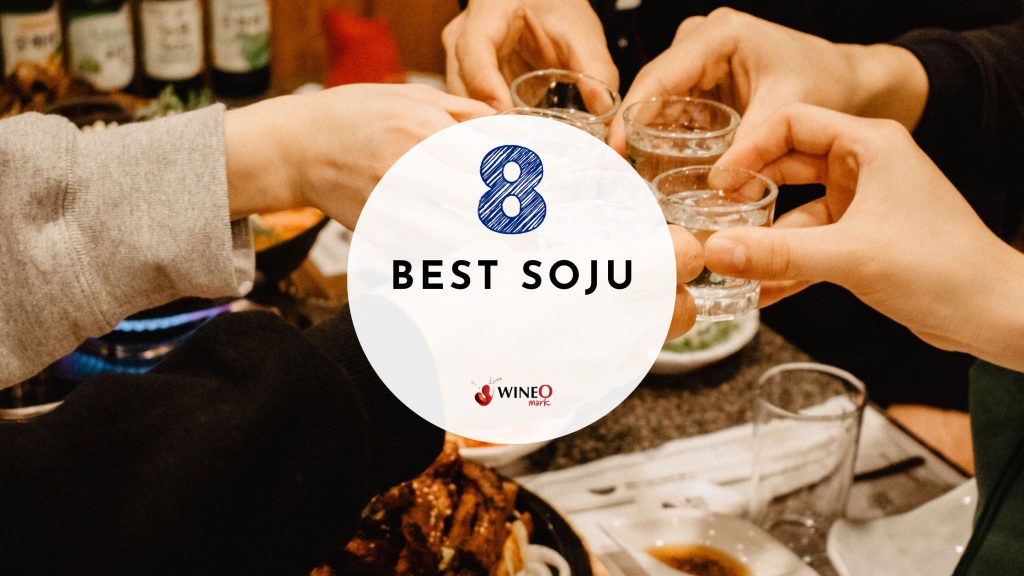
Before we look at the best Soju, let’s talk more about Soju. The ubiquitous Korean alcoholic beverage that has grown increasingly popular worldwide and for good reason. This clear, smooth liquor is usually made from rice, barley, or sweet potatoes. And it packs a punch with an alcohol content ranging from 16% to 45%.
Plus, its versatility and neutral flavor make it a perfect companion for Korean BBQs, street food, or simply a night out with friends.

HiteJinro is one of South Korea’s leading beverage companies, commanding significant respect and recognition, both domestically and internationally. Founded in 1924, the company has established a strong presence in the alcohol industry.
Arguably, HiteJinro’s most notable contribution to the alcohol industry is Chamisul Soju. Because its highly regarded for its premium quality and is produced using a patented bamboo charcoal filtration process. Just a delightful example of classic Soju, offering a clean, crisp, and smooth drinking experience.
In addition to its famed Soju, HiteJinro also offers a range of beers under the brand Hite. Hite beer is a popular lager in South Korea. Known for its crisp, light, and refreshing taste that pairs well with various Korean dishes.
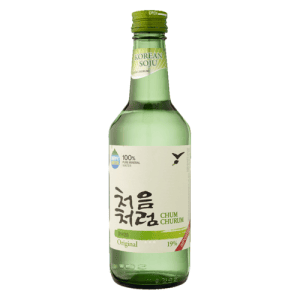
Established in 1926, Lotte Liquor forms part of the larger Lotte Corporation conglomerate, holding a dominant position in South Korea’s spirits market. The company produces a wide variety of alcoholic beverages. But it’s particularly recognized for its prominent role in Soju production.
And Lotte Liquor’s flagship Soju brand is Chum Churum, a name that charmingly translates to “Like the First Time.” This signifies the brand’s intent to provide a pleasantly smooth drinking experience like the first time you tasted Soju. This brand has become an integral part of the Korean Soju landscape that is beloved by locals and worldwide drinkers.
Chum Churum Original Soju serves as the cornerstone of the brand’s offerings. It sets itself apart from other Soju brands by its slightly lower alcohol content, around 16%. Therefore, making it a more approachable choice for those seeking a milder soju experience.
Using pristine water and high-quality grain, Chum Churum Original offers a smooth, slightly sweet profile that is satisfying without being overpowering. Finally its smoothness and clean finish make it highly versatile.

Good Day Soju is a renowned product of Muhak, with a history spanning over half a century. Good Day Soju offers a refreshing perspective on this traditional Korean spirit. It features a light, clean taste, characteristic of traditional Soju. But it distinguishes itself with a slightly smoother, more approachable profile.
However, where Good Day truly shines is in its extensive range of flavored Sojus. These options, from Blueberry to Citron to Peach, have taken the market by storm. They offer a perfect blend of sweetness, fruitiness, and the classic Soju kick, making them a popular choice, especially among younger drinkers.
For those seeking a traditional Soju experience, Andong Soju is the ideal choice. With an alcohol content of 40% to 45%, it’s considerably stronger than its mainstream counterparts.
Made in Andong, a city with a rich history of Soju production, this handcrafted Soju follows traditional brewing methods passed down through generations. Its full-bodied flavor, reminiscent of earthy notes and a subtle sweetness.
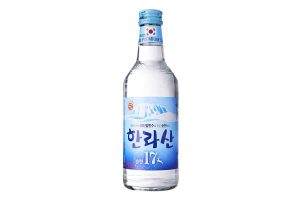
Hallasan Soju is named after the iconic Mount Hallasan on Jeju Island, South Korea. It embodies the pristine natural beauty and purity of its namesake. This Soju is crafted with water sourced from the foot of Mount Hallasan, famed for its purity. Therefore, this natural alkaline water, imparts rich minerals, results in a smooth and clean spirit.
For their Soju, there are primarily two options available: Hallasan 21 and Hallasan 17, with both numbers denoting the percentage of alcohol it contains. Hallasan Soju’s flavor profile is noted for its smoothness and light sweetness. Its smooth character and subtle flavors make it a versatile spirit, suitable for sipping neat, mixing in cocktails, or pairing with a range of dishes.
Finally, Hallasan states “Using the latest IN Line Blending technology, natural sweetness is added back in, along with aspartic acid, which helps hangover relief.”

Charm Soju, a brand from South Korea, offers a smooth and refined drinking experience for Soju enthusiasts. Known for its mild and pleasant taste, Charm Soju is a popular choice among those who prefer a slightly lighter alcoholic beverage. With an alcohol content typically ranging between 16% and 20%.
Charm Soju is made through a meticulous process that includes multiple filtrations, resulting in a clean and refreshing taste.
Although it’s not as well-known as some of the other soju brands mentioned earlier, such as Chamisul or Chum Churum, Charm Soju is worth trying for those looking to explore the diverse world of Soju.

Daesun Soju, a distinguished brand hailing from Busan, South Korea’s bustling port city, is a testament to the perfect blend of time-honored traditions and modern techniques in Soju production.
Established in 1924, Daesun has continued to refine and elevate the art of Soju-making, resulting in high-quality spirits that cater to various tastes and preferences.
As mentioned on their official website, this Soju is an award-winning drink that boasts a less bitter taste, exceptionally smooth texture and it is less likely to cause a hangover.

Hemosa Soju, a premium entry in the world of Korean spirits, redefines expectations with its high-quality ingredients, refined flavor profile, and elevated alcohol content (40%).
Hemosa Soju is made with rice and underground bedrock water, which makes it not only intriguing but also pure. You can see the clarity of the Soju, which is proof of the purity of its ingredients. The fragrance of fresh pine in the drink reminds you of a peaceful forest, and it’s quite inviting.
When you taste Hemosu Pine Forest Soju, you can immediately tell that it has a rich historical background. It has a perfect balance of flavors, with a slight sweetness of rice soju and the fresh, earthy tones of pine that make it unique. The drink ends with a refreshing, clean finish that will leave you wanting more.

Soju is a traditional Korean alcoholic beverage that is widely consumed in South Korea and gaining popularity globally. It is a clear, colorless distilled spirit often compared to vodka in its appearance, but it has a unique taste and lower alcohol content, typically ranging from 16% to 50%, though most commonly found between 16% and 25%.
The primary ingredients used to make soju include rice, wheat, barley, and sometimes sweet potatoes or tapioca. The traditional distillation process for soju was similar to that of sake in Japan. However, during the Korean War, there were shortages of rice, so distilleries started using other starches such as potatoes and wheat instead. The prohibition on using rice in alcohol production was lifted in the late 1990s, and many premium Soju brands have since returned to using rice.
In recent years, flavored Soju, infused with fruits like green grapes, apples, and peaches, has become popular, especially with younger drinkers and those new to Soju. These variations offer a sweeter, fruitier beverage that can be enjoyed on its own or as part of a mixed drink.
Overall, Soju is an integral part of Korean culture and social life, often enjoyed at celebrations, social gatherings, and casual dining events. Its global recognition has been growing, with it being one of the best-selling spirits in the world.
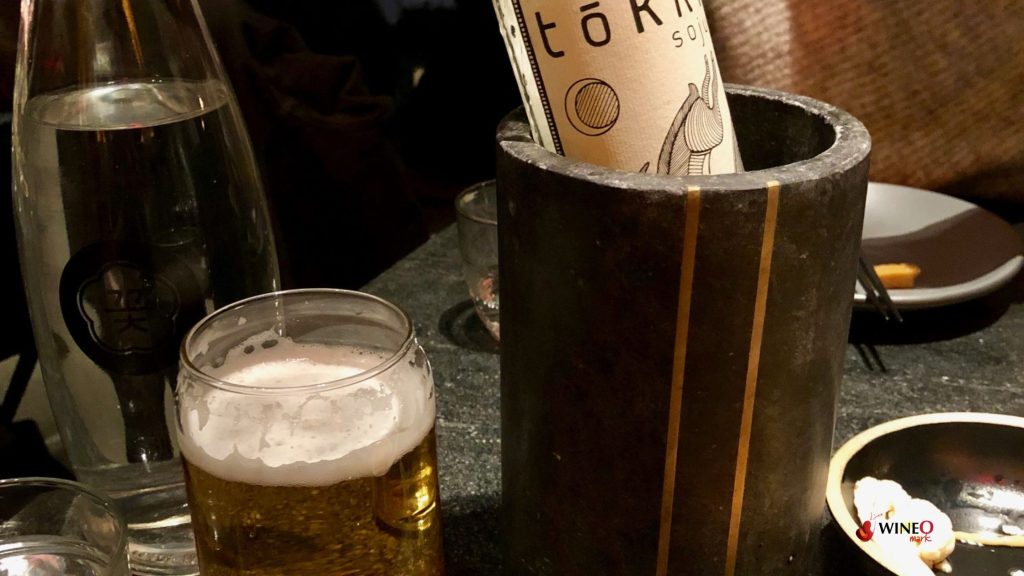
Soju has a distinct taste profile that is typically clean, neutral, and slightly sweet. The flavor can be compared to vodka, but soju is much smoother and lighter due to its lower alcohol content.
The base ingredient—rice, wheat, barley, or sweet potatoes—can influence the taste.
Despite its somewhat sweet and gentle flavor, soju has a noticeable kick due to its alcohol content, which is generally between 16% and 25% for most commercial brands, but can go higher for traditional or premium varieties.
Flavored Soju, which has gained popularity in recent years, offers a wider range of taste profiles. These Sojus are infused with different fruits like green grapes, apples, peaches, or strawberries, resulting in a fruitier and sweeter taste.
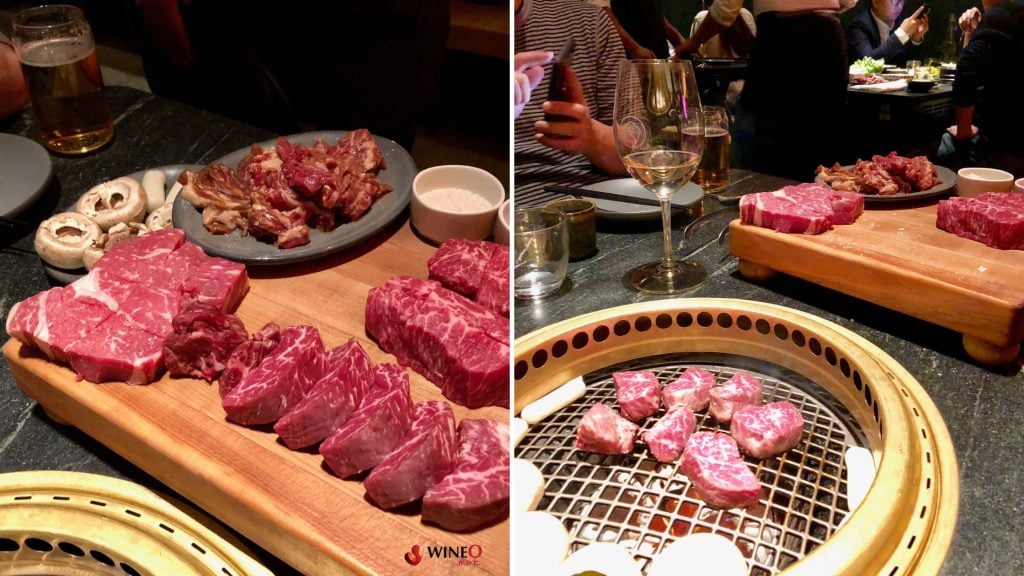
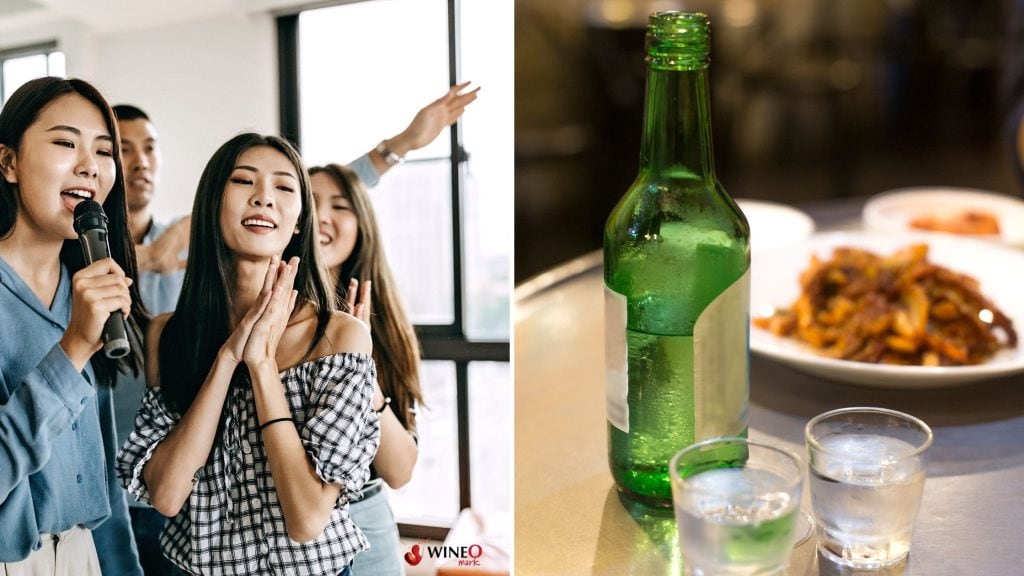

Best Lunch In Napa – Our 12 Favorite Spots! Lunch is a must when you’re out wine tasting! Whether you’re in the mood for a

North Coast Wine Co. Outerbound Pinot Noir – WineO Mark Review Wine Stats Grape Variety: 100% Pinot Noir Vintage: 2019 ABV: 14% Wine Region: North Coast,
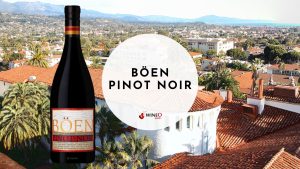
Böen Pinot Noir – WineO Mark Review Wine Stats Grape Variety: 100% Pinot Noir Vintage: 2021 ABV: 14.6% Wine Region: California Flavor Profile: Cherry, raspberry, blackberry,

Merry Edwards Sauvignon Blanc – WineO Mark Review Wine Stats Grape Variety: 100% Sauvignon Blanc Vintage: 2022 ABV: 14% Wine Region: Russian River Valley, California

The Hess Collection Allomi Chardonnay – WineO Mark Review Wine Stats Grape Variety: 100% Chardonnay Vintage: 2019 ABV: 14.3% Wine Region: Napa Valley, California Flavor Profile:

Stags’ Leap Chardonnay – WineO Mark Review Wine Stats Grape Variety: 100% Chardonnay Vintage: 2022 ABV: 14.1% Wine Region: Napa Valley, California Flavor Profile: Oak, vanilla,

Godeval Cepas Vellas Godello – WineO Mark Review Wine Stats Grape Variety: 100% Godello Vintage: 2021 ABV: 13% Wine Region: Valdeorras, Spain Flavor Profile: Peach,

Félix Solís Mucho Más Tinto N.V. – WineO Mark Review Wine Stats Grape Variety: Tempranillo, Syrah Vintage: Non-Vintage ABV: 14% Wine Region: Spain Flavor Profile: Vanilla,
